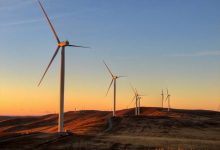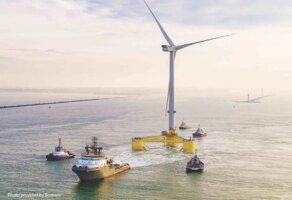The International Renewable Energy Agency (IRENA) announced Tuesday that 171GW of new renewable energy capacity was installed in 2018, a 7.9% annual increase, and helping renewable energy into a position to provide a third of global power capacity.
This continues the decade-long growth of renewables, spearheaded by wind and solar energy technologies, which accounted for 84% of 2018’s growth, while nearly two-thirds of all new power generation capacity added in 2018 came from renewable energy sources – led by the emerging and developing economies.
Total renewable energy generation capacity, then, reached 2,351 GW by the end of 2018 and now accounts for around a third of the world’s total installed electricity capacity.
Regionally, Asia accounted for 61% of all new renewable energy capacity installed in 2018, but it was Oceania that saw the most impressive growth, with a 17.7% increase in 2018. Africa’s growth rate saw it step into third place, with 8.4% growth.
“Through its compelling business case, renewable energy has established itself as the technology of choice for new power generation capacity,” said Adnan Z. Amin, IRENA Director-General. “The strong growth in 2018 continues the remarkable trend of the last five years, which reflects an ongoing shift towards renewable power as the driver of global energy transformation.
“Renewable energy deployment needs to grow even faster, however, to ensure that we can achieve the global climate objectives and Sustainable Development Goals. Countries taking full advantage of their renewables potential will benefit from a host of socioeconomic benefits in addition to decarbonising their economies.”
Solar energy saw the biggest increase again in 2018, adding 94 GW of new capacity, an increase of 24% – dominated by Asia which saw growth of 64 GW, led by China, India, Japan, and South Korea. Other major increases in 2018 were seen in the United States, which installed 8.4 GW of new capacity, Australia, which added 3.8 GW, and Germany, adding 3.6 GW.
The wind energy sector installed 49 GW of new capacity, an increase of 10%. China and the United States continued to dominate here, installing 20 GW and 7 GW respectively, while other countries which saw increases of over 1 GW included Brazil, France, Germany, India, and the United Kingdom.
Hydropower capacity increased by 21 GW, an increase of only 2%, while bioenergy increased by 6 GW, an increase of 5%.
Overall, hydropower accounts for the largest share of renewable energy capacity around the globe, with a total of 1,172 GW – approximately half of the globe’s renewable energy capacity – followed by wind energy with 564 GW and solar energy with 480 GW.











